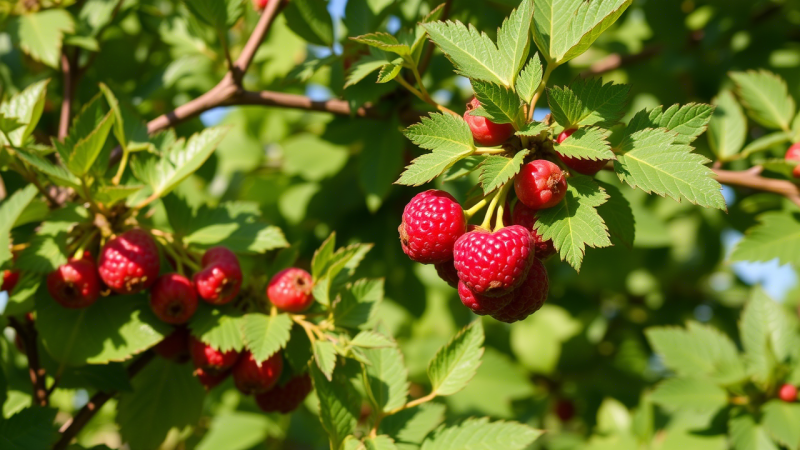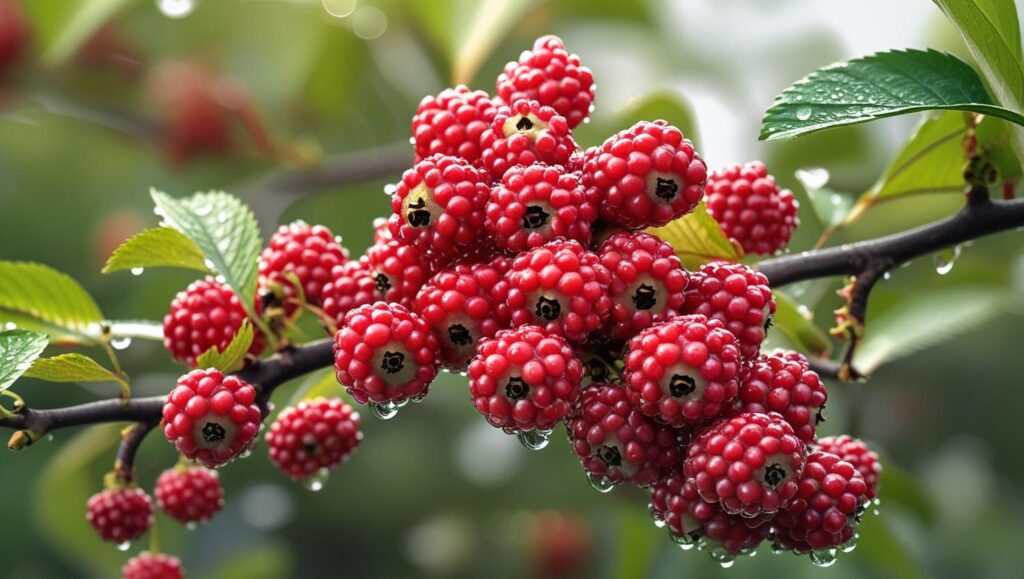Australia stands as the world’s largest and sole commercial producer of the riberry, a native fruit gaining international attention for its unique, spicy-sweet flavor. As the global appetite for new tastes and “superfoods” grows, the burgeoning riberry industry underscores both the immense potential of Australia’s native agriculture and the complex challenges of balancing commercial growth with cultural integrity and ecological sustainability.

The riberry (Syzygium luehmannii), a small, crimson fruit often described as having a flavor profile reminiscent of cloves and cranberries, is indigenous to the subtropical rainforests of Australia’s eastern coast. While it has been a source of food and medicine for Indigenous Australians for millennia, its journey into a commercially cultivated crop is a relatively recent development, driven by a rising “bushfood” movement and acclaim from culinary experts worldwide.
Currently, the commercial production of this Riberry Production is concentrated in the Northern Rivers region of New South Wales and parts of Queensland. While precise, recent government statistics for the niche crop are not readily available, industry estimates place the annual farm-gate value of the broader Australian native foods sector between $20 million and $25 million, with riberry being one of the 13 priority species identified for development.
The Australian Riberry Market
| Key Fact | Detail / Statistic | Source/Context |
| Global Production Rank | 1 | Australia is the only country with a commercial riberry industry. |
| Primary Growing Regions | New South Wales & Queensland | The fruit thrives in its native subtropical rainforest climate. |
| Estimated Industry Value | ~$20-25M (at farm-gate for total native foods) | AgriFutures Australia / ANFAB reports. Riberry is a key part of this emerging sector. |
| Key Challenge | Ensuring Indigenous Benefit & Ownership | Reports indicate low levels of Indigenous ownership in the wider native foods supply chain. |
From Rainforest to Restaurant: The Rise of a Native Delicacy
The commercial trajectory of the riberry began to accelerate in the late 20th century, championed by pioneering growers and chefs who recognized its culinary potential. The fruit’s vibrant color and complex, aromatic taste make it a versatile ingredient in products ranging from jams, sauces, and syrups to distilled spirits and gourmet garnishes.
“The interest in Australian native ingredients is at an all-time high,” said Amanda Garner, a prominent advocate for the native foods industry and former Co-Chair of Australian Native Food and Botanicals (ANFAB), the industry’s peak body. “Fruits like the riberry offer a unique Australian flavor that can’t be replicated anywhere else, and that’s a powerful asset in the global food market.”

This rising demand, however, presents a significant challenge: supply. The industry is still in its infancy, characterized by a small number of dedicated growers. Developing new cultivars that are high-yielding, disease-resistant, and consistent in quality is a primary focus for researchers and producers alike.
“A basic understanding of a species’ fundamental biology is necessary for successful commercial cultivation,” noted a 2010 report from AgriFutures Australia, a government research corporation that has studied the cropping behavior of riberries. The report highlighted the need for further research to optimize fruit set and develop select varieties, including seedless types, to meet market demands.
Cultural Significance and the Question of Authenticity
Long before its commercialization, the riberry was a valued resource for numerous Indigenous communities. Its harvest and use are deeply embedded in traditional ecological knowledge. As the native foods industry grows, ensuring that this cultural heritage is respected and that Indigenous communities are primary participants and beneficiaries is a critical point of focus.
A report on the native foods industry by the Gunaikurnai Land and Waters Aboriginal Corporation emphasizes this point: “The best way to turn native foods and botanicals into a major, sustainable industry is to protect its integrity, authenticity and sustainability – and that can only be achieved through the leadership of Traditional Owners.”
However, data has shown a significant disparity. A 2022 report from Western Australia’s Department of Primary Industries and Regional Development noted that while Aboriginal people are highly engaged in wild harvesting, Indigenous enterprises represent less than 15% of Australian native food producers. This has sparked a national conversation about benefit-sharing, intellectual property, and preventing the exploitation of traditional knowledge.
Professor Yasmina Sultanbawa of the University of Queensland, a leading researcher in native Australian foods, has focused much of her work on this intersection of commerce and community. “Working with Indigenous communities to develop nutritious and sustainable value-added products from native plants” is a core part of her research, which aims for outcomes that include the “creation of employment, economic and social benefits to these remote communities.”
The Path Forward: Opportunities and Obstacles
The future of Australia’s riberry production is ripe with opportunity but not without hurdles. The unique flavor profile has secured its place in high-end gastronomy and artisanal products. The growing global wellness trend also positions the riberry, which is rich in antioxidants and folate, for potential use in nutraceuticals and functional foods.
Yet, challenges remain. Beyond the need for greater Indigenous involvement, growers face agricultural risks. The fungal disease myrtle rust, which affects plants in the Myrtaceae family (to which the riberry belongs), poses a serious threat to both wild and cultivated populations. Furthermore, scaling up production from a cottage industry to meet significant international demand will require substantial investment in research, cultivation, and supply chain infrastructure.
As the world’s sole purveyor of this unique Australian fruit, the nation’s agricultural sector, in partnership with its First Peoples, is now tasked with steering the riberry from a local secret into a global success story—one that is not only profitable but also equitable and sustainable.
Who is the World’s Largest Horned Melon Producer? The Answer is More Complex Than It Appears
